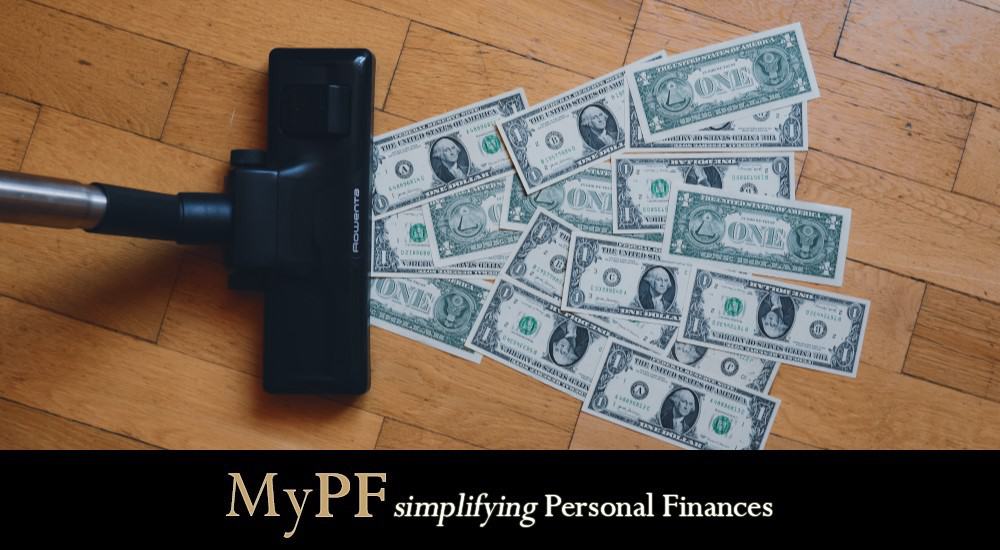Personal cash flow is an important aspect to sustain a healthy financial plan. Learn some of the ways to improve your cash flow.
Beware of little expenses; a small leak will sink a great ship – Benjamin franklin
Being aware of and familiar with your personal cash flow is one of the ways to measure financial health. It is the most important element in wealth management. Cash flow works like a heart to everything in the wealth management process.
Contents
What is “Cash Flow”?
Cash flow consists of two important components, which are income and expenses. It is about how much money inflow you are generating and how much money outflow you using for spending. It is always measured at a given period often monthly or yearly basis.
- Surplus or positive cash flow is when your income is more than your expenses.
- Meaning that you can save money and use that savings for other healthy opportunities such as emergency fund, investments, etc.
- Deficit or negative cash flow is when your expenses are more than your income.
- Meaning that you are likely to already or soon to be incurring debt.
So, the next question is, how well do you know your current cash flow?
A Malaysian Financial Literacy survey 2019 by a financial comparison portal, RinggitPlus, shows that about 43% of Malaysians spend either more or exactly what they earn. It also found that 53% of the 8,000 surveyed were not able to survive more than three months with their savings.
You must gain control over your money or the lack of it will forever control you – Dave Ramsey
Here are several tips on how can you improve your cash flow and have more and more surplus cash flow!
Tip #1. Understand Your Current Income Streams
If you are employed and receive a fixed income every month, this question is easy and straightforward to answer. You just need to be aware of your paycheck date (so that you can pay your commitment timely) and what are your mandatory deductions such as for EPF, SOCSO, and Tax.
If you are self-employed, the answer to this question is likely to vary with each month. It is crucial to understand your inflow pattern to meet your commitment timely. Additionally, for a business owner, business income should not be mixed up with personal income. In other words, you need to decide how much monthly paycheck you can have and if possible, how much yearly dividend you can enjoy without disrupting your business cycle.
Whether employed or self-employed, if you are an investor you would also enjoy passive income from your investments, such as through dividends received or rental income.
Tip #2. Keep Track of Your Expenses
You cannot truly improve your cash flow without knowing your current cash flow.
You need to understand what are your expenses and how much you spend on expenses, both regularly frequent and less frequent.
- Examples of frequent expenses: Monthly groceries, fuel, loan repayments, car servicing.
- Examples of less frequent expenses: Annual quit rent, renewal of road tax, insurance premium payments.
Note: Unexpected emergency expenses (such as medical bills after a traffic accident) are reasons to dip into an emergency fund, and why you need to have a suitably-sized emergency fund.
You can choose to track your expenses with paper and pen, on your computer with a spreadsheet, or even with one of many available expense-tracking mobile phone apps.
As you track your expenses, ensure that your tracking tallies with what your actual bank account shows. This helps ensure you maintain reliable records of your expense tracking, which will be very useful for the next tips in improving your cash flow.
Tip #3. Identify the Types of Outflow
Once you have done tracking your expenses, look at your outflow (what you are spending on) and categorize them. For example:
- Savings Outflow – this includes mandatory or voluntary savings and premium or contribution paid for insurance or takaful plans.
- Financial commitment outflow – payment of loan or financing commitment to the financial institutions.
- Expenses outflow – Home & living expenses, Transportation, Education, Entertainment, subscriptions, etc.
This step is crucial as it helps you visualize where your money is going. In the event that your income is strained, this step allows you to rank your spending priorities according to needs in order to deprioritize the less important items to spend on.
In some extreme cases, if your outflow is on items you deem all to be necessary and the total is too much for your current income, then a debt management review is recommended.
Tip #4. Eliminate Non-Important Expenses
With the information you gathered from expense tracking and categorizing your outflow, you should be able to see a pattern emerge. Use these data points to reflect on your spending choices.
Re-evaluate what are true needs versus wants for yourself and your household. Ask yourself some questions:
- Do you really need to spend on these items? What is the ROI?
- Can you find cheaper alternatives to your spending? Are the cheaper alternatives good enough?
- Can you afford to continue your spending patterns? Would the same money put into savings and investments be better for you?
This part is of course easier said than done. Often as humans, we are attracted to a certain type of lifestyle influenced by the people around us. Other times, we gain satisfaction from retail therapy. However, if such behavior results in harming our long-term well-being, it is time to shake ourselves awake. Take charge of your own life and your own choices because they determine your future. Let others determine their future, for better or for worse, and keep yours within your own hands.
Of course we all need a treat sometimes as well. Just make sure you do not end up treating yourself daily!
If you are having trouble with this step, here are some articles which would benefit you.
- 5 Considerations When Dealing with Lifestyle Creep
- 11 Tips to Cultivate Good Spending Habits
- 4 Steps for Handling Financial Peer Pressure
Tip #5. Increase Your Income
If cash flow is deficit or is trending that way, another consideration on top of trimming outflow is to increase income. It can be by either increasing your passive income or active income.
Passive income is a type of income where you are not actively involved and spend less time in the process. An example of this is the dividends you receive from investments.
There are many types of investments that you can consider, but at the same time you need to make sure it is a legal/ permissible investment (not scam) and need to understand its risk too. This method is suitable to build up long term goal such as retirement fund. The earlier you start, the better and the more you can enjoy it later. Other common passive income sources are rental income and income from the intellectual property such as from writing in ebook, photography, issuing a patent, or building a website.
Active income is a type of income where you are actively involved in and spend much of your time on it. Your salary is an example of active income (consider asking for a raise). Taking up side jobs or part-time jobs that generate income are also forms of active income. There are also other benefits to taking up active side jobs besides the money.
Ideally, equip yourself with the necessary knowledge. Perhaps extra certification or licensing could gain you better recognition and higher pay? Learn about what investment options match your risk profile. Are there opportunities out there which match your experience without much extra effort? And above all else, remember to track and manage your side income.
Tip #6. Sit Down and Plan Your Expected Cash Flow
At this point, you have your spending history, you are aware of your income and spending patterns, you have trimmed down your expenses. Now it is time to predict the future!
Having a plan can never go wrong. It guides you in making better, faster & more efficient decisions. Here are some of the examples you can work on to make a plan for your future.
- Set a budget – Doing this tells you how much you can spend in order to keep your spending on track. Be realistic with your budget.
- Meal plan – Whether single or in a household, planning your meals in advance helps you estimate what food items you can buy in bulk (money savings!) and which items you can buy less of since you won’t be using much (less rotten food is less wastage!). An additional benefit to this is you are taking good care of the quality of your food intake.
- Sign up for useful loyalty programs – Take advantage of the discounts and special offers available for stores you buy frequently from such as groceries, household supplies, or even petrol.
- Plan your shopping trips – other than it can save your time (which is expensive), this may also reduce your traveling related expenses.
- Plan your payments for financial commitments or statutory obligations – Firstly, this helps you set aside the required sum of money. Secondly, timely payments will avoid unnecessary additional interest or penalty which can be significant to your outflow.
Do remember to continue tracking your expenses and then set aside time to regularly review your numbers. How does your plan match up with your actual spending? What needs to change?
Tip #7. Working Together with An Expert
You are likely keen to improve your cash flow because you want to meet a financial goal. Maybe it is to be debt-free. Maybe it is to have a comfortable retirement. Maybe you are struggling to give your family a good life after the passing of a spouse.
Having a clearer picture of how your money can work to achieve your dreams requires a more detailed analysis. By engaging a licensed financial planner, you can better understand how much you require to meet your goals, what steps can you take now to put you on the right path, what financial decisions to prioritize and what to deprioritize to best reap benefits, and how far your goal is from where you are now.
Besides helping you align yourself, they can also guide and motivate you. Even if you fall from the plotted path, they will be there to show you the way back.
Conclusion
The key to your financial freedom starts with a healthy cash flow. Managing your cash flow well results in your hard-earned money taking care of you.
“It’s not your salary that makes you rich, it’s your spending habits” – Charles A.Jaffe
Signup for a MyPF membership and get connected to a licensed financial planner.
You May Also Like
- How To Manage Your Debt Efficiently
- Income and Expenses
- 5 Easy Tips To Peacefully Sail Through An Economic Downturn
- 4 Tips To Have An Effective Review Of Your Personal Finances
- 5 Ways for Retired Couples to Earn Extra Income
What other tips you feel useful to plan your own cash flow?














Leave A Comment